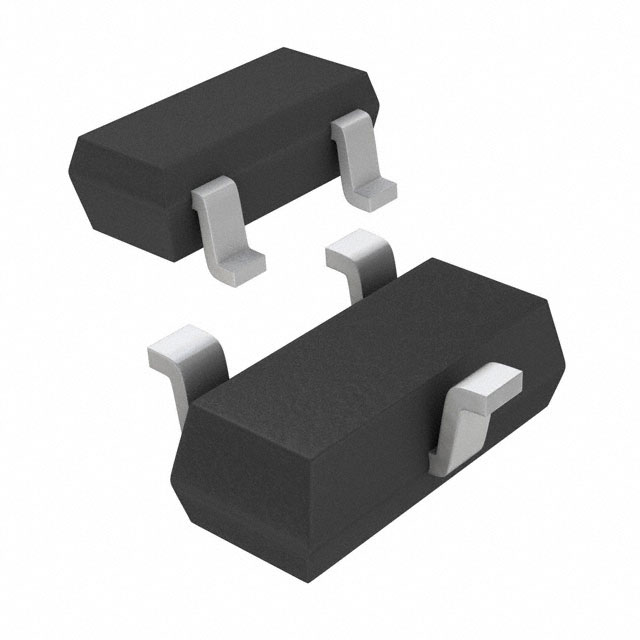BC846BR TR
Product Overview
Category: Transistor
Use: Amplification and switching in electronic circuits
Characteristics: Small signal NPN transistor, low power dissipation, high current gain
Package: SOT-23
Essence: Small signal amplification and switching
Packaging/Quantity: Tape and reel, 3000 units per reel
Specifications
- Collector-Base Voltage (VCBO): 80V
- Collector-Emitter Voltage (VCEO): 65V
- Emitter-Base Voltage (VEBO): 6V
- Collector Current (IC): 100mA
- Power Dissipation (PD): 250mW
- Transition Frequency (fT): 100MHz
- Operating Temperature Range: -55°C to 150°C
Detailed Pin Configuration
- Base (B)
- Emitter (E)
- Collector (C)
Functional Features
- High current gain
- Low power dissipation
- Fast switching speed
- Small package size
Advantages and Disadvantages
Advantages: - High current gain allows for small input signals to control large output currents - Low power dissipation reduces heat generation - Small package size enables compact circuit design
Disadvantages: - Limited maximum collector current compared to other transistors - Moderate transition frequency may limit high-frequency applications
Working Principles
The BC846BR TR is a small signal NPN transistor that operates by amplifying small input signals or controlling the flow of current in electronic circuits. When a small voltage is applied to the base terminal, it controls the larger current flowing between the collector and emitter terminals.
Detailed Application Field Plans
- Audio Amplification: Used in audio amplifiers to amplify small input signals from microphones or musical instruments.
- Switching Circuits: Employed in electronic switches to control the flow of current in various applications.
- Signal Processing: Integrated into signal processing circuits to manipulate and amplify electronic signals.
Detailed and Complete Alternative Models
- BC847BR: Similar characteristics and package, with slightly different specifications.
- 2N3904: Commonly used alternative with comparable characteristics and performance.
- 2SC945: Alternative model with similar application range and package.
This comprehensive entry provides an in-depth understanding of the BC846BR TR, including its specifications, functional features, advantages and disadvantages, working principles, application field plans, and alternative models, making it a valuable resource for engineers and enthusiasts in the electronics industry.
Lista 10 Vanliga frågor och svar relaterade till tillämpningen av BC846BR TR i tekniska lösningar
What is the maximum collector current of BC846BR TR?
- The maximum collector current of BC846BR TR is 100mA.
What is the typical hFE (DC current gain) of BC846BR TR?
- The typical hFE of BC846BR TR is 200-450 at a collector current of 10mA.
What is the maximum power dissipation of BC846BR TR?
- The maximum power dissipation of BC846BR TR is 250mW.
What is the voltage rating for BC846BR TR?
- The voltage rating for BC846BR TR is 65V.
What are the typical applications for BC846BR TR?
- Typical applications for BC846BR TR include amplification, switching, and general purpose use in electronic circuits.
What is the thermal resistance of BC846BR TR?
- The thermal resistance of BC846BR TR is approximately 417°C/W.
Is BC846BR TR suitable for low noise amplifier designs?
- Yes, BC846BR TR can be used in low noise amplifier designs due to its low noise characteristics.
Can BC846BR TR be used in high-frequency applications?
- Yes, BC846BR TR can be used in high-frequency applications due to its high transition frequency (fT) of 300MHz.
Does BC846BR TR have ESD protection?
- BC846BR TR does not have built-in ESD protection, so external ESD protection measures may be required in sensitive applications.
What are the recommended storage conditions for BC846BR TR?
- It is recommended to store BC846BR TR in a dry environment at temperatures between -55°C and 150°C.


